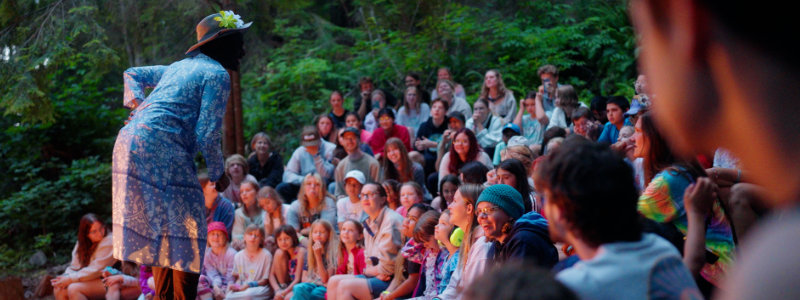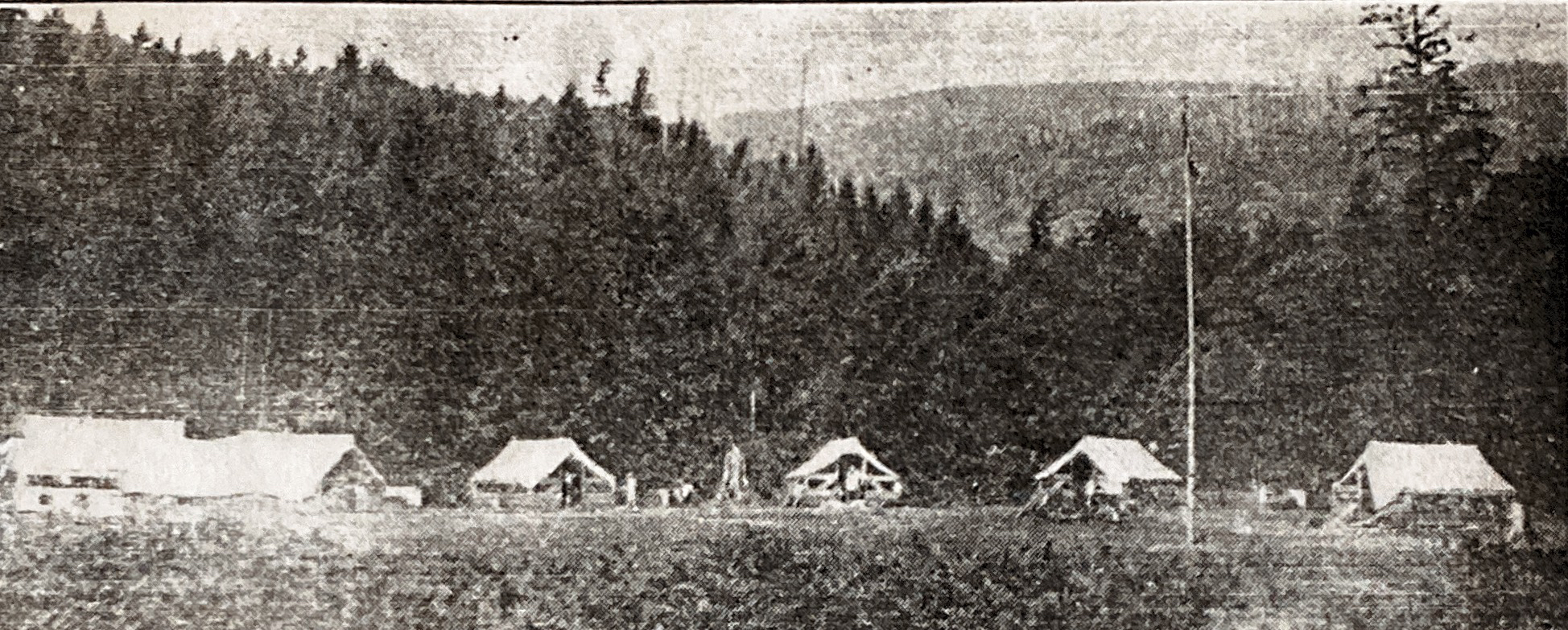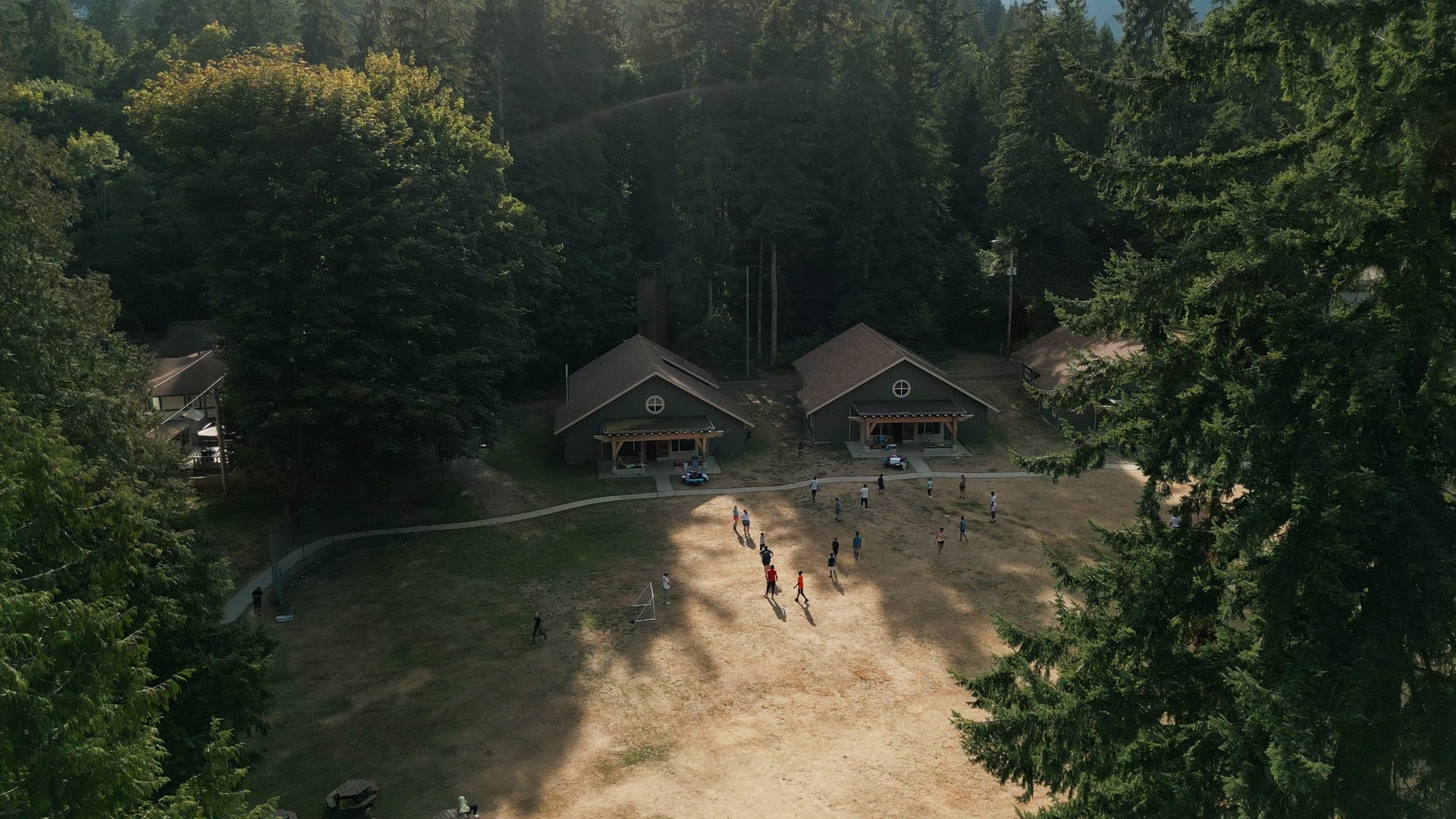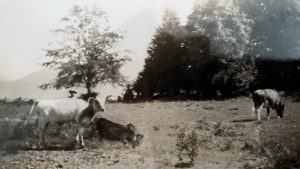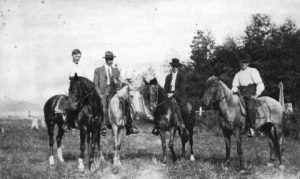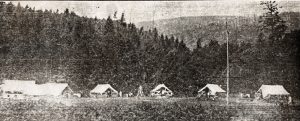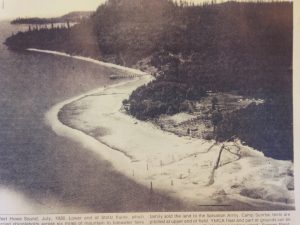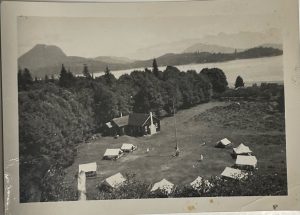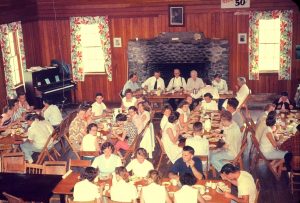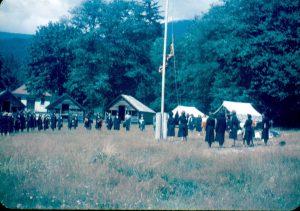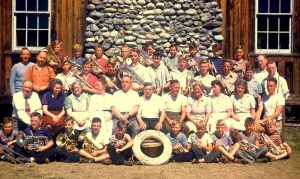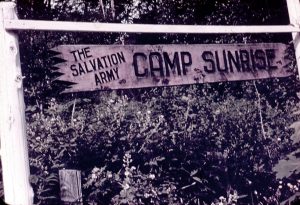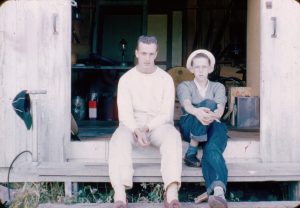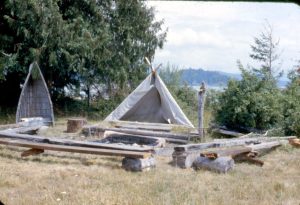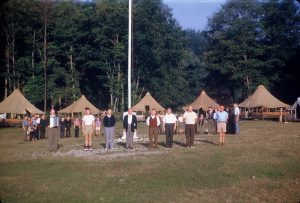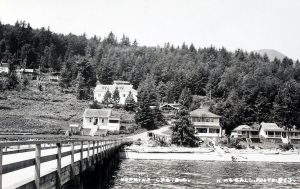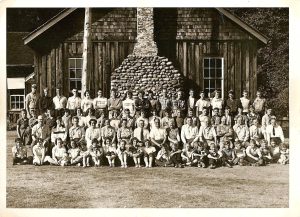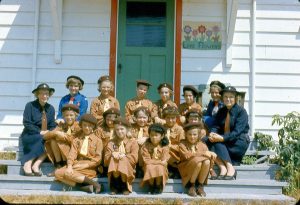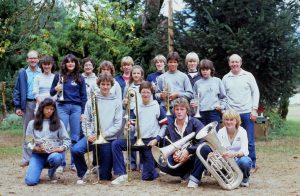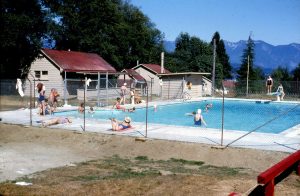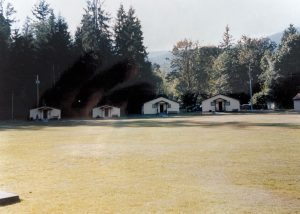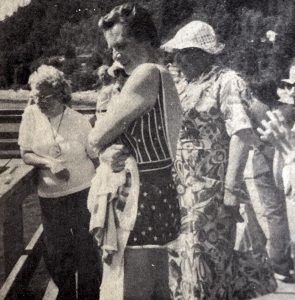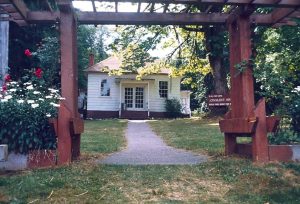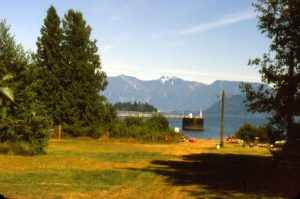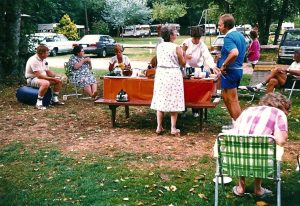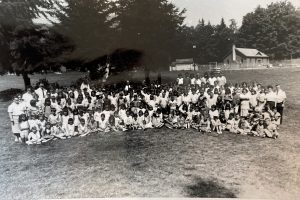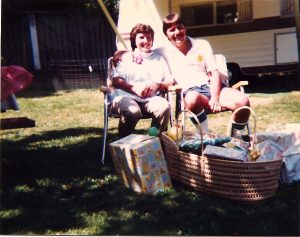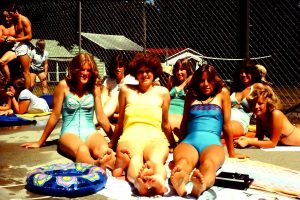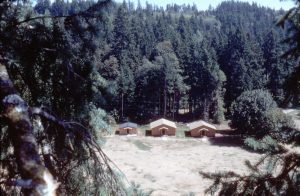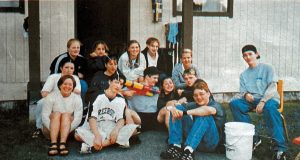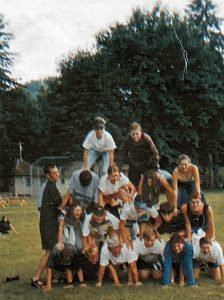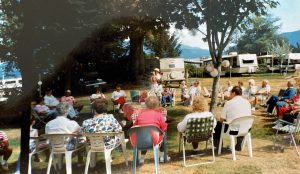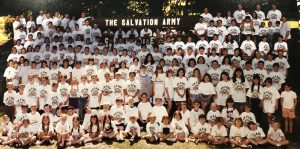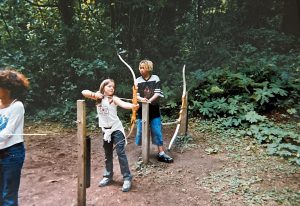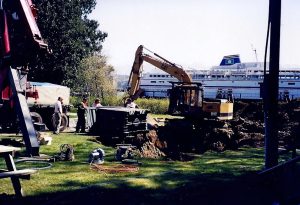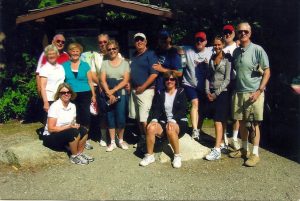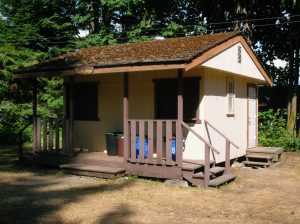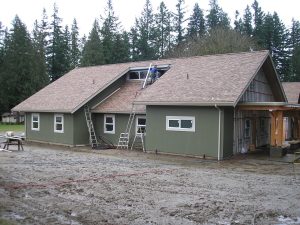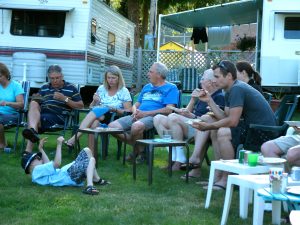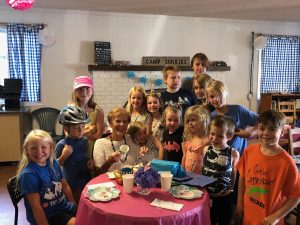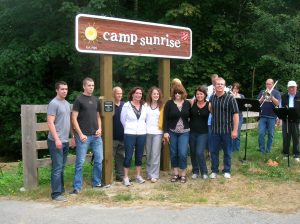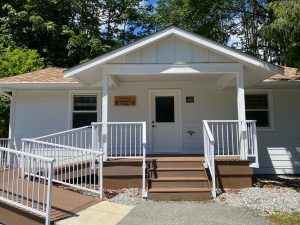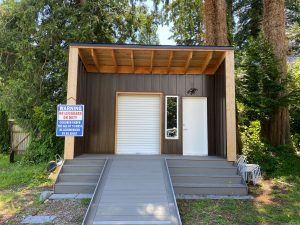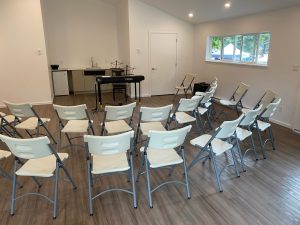The history of Camp Sunrise dates back to the year 1925, when Colonel Arch Layman, the newly appointed Divisional Commander, found there was no camp for the Vancouver area and immediately set out to resolve the difficulty. He states “the opportunities for securing a camp were few. I looked over the area, went up the Bay with an agent, but was unable to find anything”.
Captain Fraser Morrison, who was the Divisional Youth People’s Secretary at the time, teamed up with the Colonel and they went to Gibsons, borrowed a boat from the Y.M.C.A., and rowed up and down the shore, sleeping on beaches, until they located the present site. You will realize there would have been no ferry at that time and much of the area would have been sparsely developed if developed at all.
Mr. Gooding (after whom Gooding Hall is named), a contractor, proved to be of great help to the D.H.Q. Team. They travelled together to the camp, stayed in tents,, while they started the first footings for the main building, which is the present Gooding Hall. A “work bee” was organised on the old fashioned basis, with a number of Salvationist carpenters and construction workers from the Vancouver area. Some went up and stayed overnight, while others came the next morning. The main building was practically constructed in one day! The first year of Sunrise, they could do no other than to sleep in tents.
Fast forward to today, and we are proud to celebrate our 100th Anniversary! Over the years, the camp has grown and evolved, thanks to the dedication and generosity of countless individuals who contributed their time, effort, and resources. The excellent facilities we enjoy today are a testament to their unwavering support.
As we reflect on this remarkable milestone, we look forward to the future, hoping that the developments to come will continue to enrich the lives of the young people for whom Camp Sunrise was created nearly a century ago. May we remain inspired by the same far-reaching vision that Colonel Arch Layman had when he first founded this camp.

